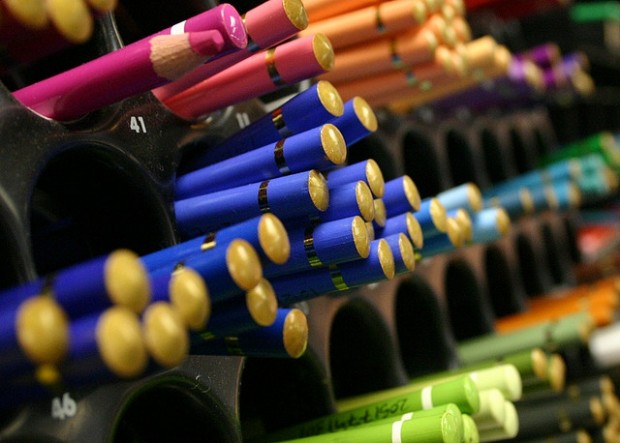
With the most recent U.S. Bureau of Labor Statistics data drop, one thing was very clear: There are a lot of transactions that either weren’t on the books, or that don’t fall into one of the BLS’s categories.
With fewer people taking part (at least officially) in the economy than at any point in the last 30 years, and more workers declaring that they’re working just part time, there are some big holes in the figures, which just don’t explain how regular people are making it. That’s not exactly news; we’ve known that freelancers, gig economists, and other creative hustlers have been existing somewhere within that framework, uncounted, for some time. But a new study out of the U.K. demonstrates one area which the U.S. economy may want to start measuring.
According to research commissioned by Moo.com, the online business card printing service, about 1/3 of UK workers run their own part-time creative business outside of their full-time job. But they’re not just side projects — they’re financially viable, important pieces of the overall economy in the UK; in total, those creative businesses contribute around £15bn.
For some business owners, the additional work will always remain something they do during nights and weekends. But for others, the study found, owning a separate creative business is a path toward working for themselves full-time. 10% of those surveyed said that they intended to leave their full-time job within a year.
Part-time creative businesses aren’t just about the money, though. 60% of the survey participants admitted that the additional income isn’t the main point of running the business, but rather, their passion for their creative pursuits. This sentiment holds up in research, as well — and carries big implications for the importance of creative side projects on the overall economy. Behavioral scientists have studied the impact of creative side projects on wellbeing, and have found that having hobbies and interests outside of the job market not only makes people happier, but more productive in their chosen career.
Additionally, surveys of workers have shown that for many of us, our jobs define us, and when we’re happy in them, we do more and better work. Which means that these creative businesses are not only impacting the economy positively by encouraging money to change hands, but also by aiding in worker performance within the traditional economy.
In an era of persistent economy unease, side-projects and additional income have become extremely important for workers around the world. However, those numbers aren’t represented in the U.S. government’s picture of the economy, and are relatively under-studied. There’s still a lot we don’t know about the creative economy, and the impact of workers’ independent income sources.
We know though, that workers are relying less and less on traditional employment to fill their needs, both financial and personal. In the U.S., about a third of the workforce is picking up some kind of freelance work, if not working as a full-time freelancer. We also know that creativity in the workplace — whether it’s your own business, or the business you work for — can actually improve the bottom line.
What we don’t known — at least not yet — is the volume of all of this, or the true economic impact. With each new release of jobs numbers, the picture of employment seems to get rosier (or gloomier, depending on which statistic you look at). But studying the actual dollars (or Euros) that all of this creativity and independence are adding to the economy could help to give a clearer, more precise picture of how individuals are weathering the still-unstable job market.


